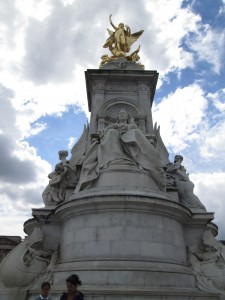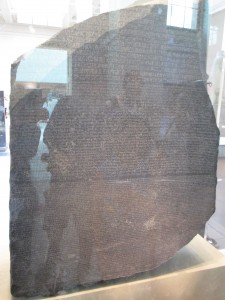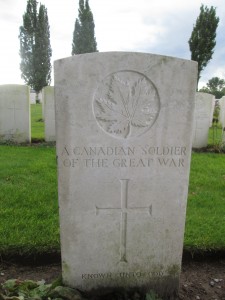Each student will be assigned a section of the novel Green Grass Running Water (pages will be divided by the number of students). The task at hand is to first discover as many allusions as you can to historical references (people and events), literary references (characters and authors), mythical references (symbols and metaphors).
———————————————————————————————————————
The occupation of Wounded Knee was in its second month (55)
The reference to Wounded Knee alludes to two significant events that took place in the hamlet of Wounded Knee within the Lakota Pine Ridge Indian Reservation in South Dakota, US. The first event is the Wounded Knee Massacre in 1890, where 300 members of the Sioux tribe were killed in a confrontation with American soldiers. The second event, which Lionel finds himself involved, is the Wounded Knee Incident in 1973, where many Indigenous people occupied Wounded Knee for 71 days in protest of the 371 treaties broken by the American government. The first event shapes the second event because the selection of Wounded Knee as the site of protest was due to its historic and symbolic value. The second event in particular highlights the conflict between state interests and tribal interests where the tribal president, Richard Wilson, seems to be working for the benefit of the government, the FBI, white settlers, and himself rather than for the best interests of the people he is suppose to represent. The tribal president’s shifting identity, no doubt, forces an examination of Lionel’s conflicting identity as employee of the Department of Indian Affairs and as a member of the reserve in Blossom. Has Lionel sold out the people that he is suppose to represent?
He was to give his talk on “The History of Cultural Pluralism in Canada’s Boarding Schools” (56)
This is a brilliant example of white-washing by Lionel, substantiating accusations from Norma that he thinks like a white man and does not defend his own culture. What we refer to today as “residential schools” are called instead “boarding school”, evoking a sense of culture of prestige and civility for something that was far from civilized. His use of the term “cultural pluralism” goes against the grain of the current conventional understanding about what actually happened in these schools, which the current government has finally decided to describe as cultural genocide.
Massasoit was the Indian who greeted the Europeans at Plymouth Rock (58)
Massasoit first encountered the pilgrims of the Mayflower in 1620. His diplomacy with the pilgrims secured peace between his tribe and the colonists for his entire life. He formed alliance with the pilgrims through treaties that ensured the safety of the pilgrims, while ensuring the support of the colonists in the case of warfare against enemy tribes. Perhaps the mention of his name invites the juxtaposition of his ideal leadership against that of Richard Wilson and Lionel. After hearing this name, Lionel reacts by saying that he is Canadian, which implies that he does not consider the first contact between the colonists and the Indigenous to be of any relevance to his personal narrative, and therefore, can excuse himself of the responsibility to engage with it.
American Indian Movement (59)
The American Indian Movement (AIM) is an advocacy group established since 1968 to bring public awareness to violations of Indigenous treaties by the US government through organized demonstrations. It is the AIM activists that make up a significant portion of the dissidents at Wounded Knee.
Battle of the Little Bighorn (61)
The Battle of the Little Bighorn took place in 1876, which witnessed the conflict between the Indigenous forces and the US Army. Contrary to the other conflicts mentioned above, the victors of this battle were the Indigenous people. By bringing this battle into the narrative, King brings about the irony of glorifying this event within a luxurious hotel predominated by affluent white visitors, as well as insuating its broader implication of how the Indigenous’ struggle for freedom may be trivialized, rather than aided, by its depiction within popular culture and within art.
“I’m Tom, and this is Gerry”/Chip and Dale (63)
The first pair of names are the main characters of the television show Tom and Jerry. The second pair of names are the main characters of the television show Chip and Dale. It should be noted that these humorous allusions are both examples of MGM shorts, among which there are often cartoon depictions of stereotypical Indigenous characters. Their popular portrayal informs the public perception of Indigenous identity and motivation, and perhaps also affect Lionel’s perception. By using these names to describe the two hotel staff, King is poking fun of Hollywood’s of giving exotic names to its Indigenous characters by giving his two characters names derived from animals.
Works Cited
“1973: Siege at Wounded Knee.” libcom.org. libcom.org group. 19 Sept 2006. Web. 12 June 2015. <https://libcom.org/history/1973-siege-at-wounded-knee>
Johnson, Caleb. “Massasoit Ousemequin.” MayflowerHistory.com. N.p. N.d. Web. 12 July 2015. <http://mayflowerhistory.com/massasoit/>
“Massacre At Wounded Knee, 1890.” EyeWitness to History, Ibis Communications, Inc. 1998. Web. 12 July 2015. <http://www.eyewitnesstohistory.com/knee.htm>
“MGM Shorts.” doctormarco.com. N.p. N.d. Web. 12 July 2015. <http://www.doctormacro.com/movie%20summaries/m/mgm%20shorts.htm>
“The Battle of the Little Bighorn.” EyeWitness to History, Ibis Communications, Inc. N.d. Web. 12 July 2015. <http://www.eyewitnesstohistory.com/custer.htm>
“The Truth and Reconciliation Commission of Canada: Interim Report.” TRC. Truth and Reconcilliation Commission of Canada. 2 June 2015. Web. 12 July 2015. <http://www.trc.ca/websites/trcinstitution/index.php?p=580>
“The UK’s best boy’s and girl’s public school.” UK Boarding Schools. UK Boarding Schools Metroplis Business Publishing. N.d. Web. 12 July 2015. <http://www.ukboardingschools.com/>
Wittstock, Laura W., Elaine J. Salinas. “A Brief History of the American Indian Movement.” American Indian Movement. American Indian Movement. N.d. Web. 12 July 2015. <http://www.aimovement.org/ggc/history.html>




